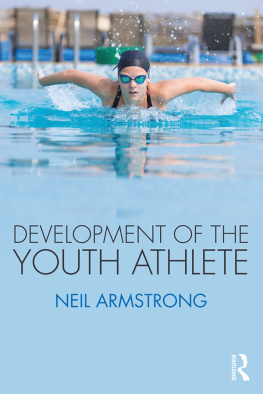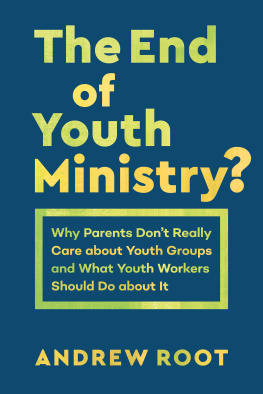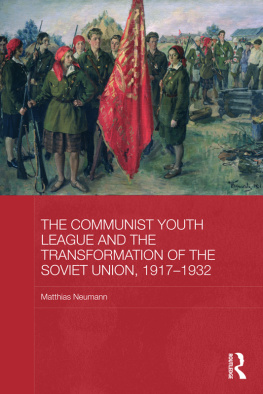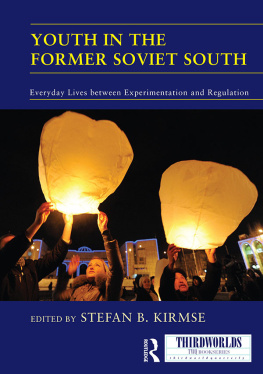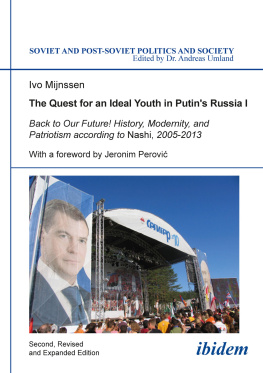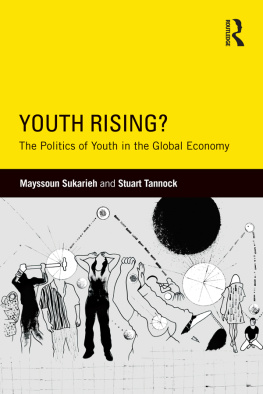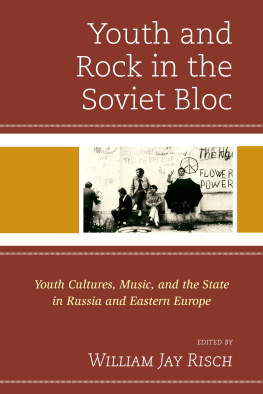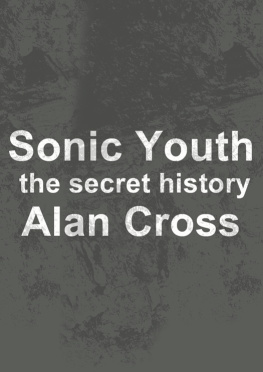Routledge Revivals
Youth in Soviet Russia
First published in 1933, Youth in Soviet Russia presents Klaus Mehnert s honest and personal account of the state of the youth in USSR. It contains themes like living human beings, student and class, student and the state, the idea of the Komsomol, the literature of the youth, youth and the theatre, the youth commune, trends and attitudes towards sex and marriage with the development of new morality. Mehnert, a German born in Russia offers valuable description of his personal experiences while living with Russian youth during four successive autumns. This book will be an essential read for scholars and researchers of history, Soviet history, Russian history, and communist history.
Youth in Soviet Russia
by Klaus Mehnert
First published in 1933
By George Allen and Unwin Ltd.
This edition first published in 2021 by Routledge
2 Park Square, Milton Park, Abingdon, Oxon, OX14 4RN
and by Routledge
605 Third Avenue, New York, NY 10017
Routledge is an imprint of the Taylor & Francis Group, an informa business
1932 Klaus Mehnert and 1933 English Translation George Allen & Unwin Ltd.
All rights reserved. No part of this book may be reprinted or reproduced or utilised in any form or by any electronic, mechanical, or other means, now known or hereafter invented, including photocopying and recording, or in any information storage or retrieval system, without permission in writing from the publishers.
Publishers Note
The publisher has gone to great lengths to ensure the quality of this reprint but points out that some imperfections in the original copies may be apparent.
Disclaimer
The publisher has made every effort to trace copyright holders and welcomes correspondence from those they have been unable to contact.
A Library of Congress record exists under LCCN: 33023464
ISBN 13: 978-1-032-12029-4 (hbk)
ISBN 13: 978-1-003-22271-2 (ebk)
ISBN 13: 978-1-032-12032-4 (pbk)
DOI: 10.4324/9781003222712
YOUTH
IN
SOVIET RUSSIA
by
KLAUS MEHNERT
TRANSLATED
by
MICHAEL DAVIDSON
The German original, Die Jugend in Sowjetrussland, was published by the S. Fischer Verlag in Berlin in 1932
THE ENGLISH TRANSLATION, SPECIALLY REVISED BY THE AUTHOR AND CONTAINING A NEW CHAPTER, FIRST PUBLISHED 1933
All rights reserved
PRINTED IN GREAT BRITAIN BY UNWIN BROTHERS LTD., WOKING
IN PLACE OF A FOREWORD:
There are a hundred million people under twenty-five years of age to-day living in the Soviet Union.
CONTENTS
GLOSSARY
BESPRISORNYI: Homeless children.
F.S.U. (FABSAVUTCHI): Factory schools.
KOLKHOS: Collective farm.
KOMSOMOL: Communist Youth Association.
KULAK: Independent farmer.
N.E.P.: New Economic Policy.
OSSOAVIAKHIM: Society for the Protection of the Soviet Union.
PIONEERS: Communist childrens organisation.
PYATILETKA: Five Year Plan.
RABFAKI: Educational courses for workers.
RAYON: Municipal district.
SUBBOTNIK: Days of voluntary work.
TS-TSHE-O: Central Black-soil District.
TRAM: Theatre of Working-class Youth.
UDARNIKI: Shock-workers.
VSEOBUTCH: Compulsory general elementary education.
YOUTH IN SOVIET RUSSIA
I
The millions of workers who are creating the new life form the real basis of our Plan of production. Living human beings, ourselves, all of us; our readiness to work in a new way, our resolve to carry through the Plan, form the real basis of our programme.
With these words Stalin ended his now famous speech of June 23, 1931. And Stalin was right. However significant material factors may be, it is surely the living human being, his brain and nerves and muscles, his beliefs and hopes and hatreds, that make history and determine development. Here is the point at which a proper evaluation of Bolshevism must begin. It may well be possible to squeeze an industry out of nothing with the help of foreign specialists and machinery, or to collectivise agriculture; but of what use are all the Socialist factories and kolkhos in the world if they are not operated by Socialist men and women? There was no necessity to sacrifice millions of human beings solely in order to mechanise the country; the sacrifice will only have been not in vain if a better human being is the outcome.
The criterion of Bolshevism is the Bolshevik. And when Stalin himself, the exponent of the materialist conception of history, speaks at the end of an extremely significant speech about the living human being, we may quite legitimately step in and ask: What kind of a man is this new human being of yours? Has a new kind of man already been produced from the new mould? Or rather, since Russia is still in the phase in which the old human being is in process of making a new mould for itself, are changes already to be seen in the old human being? And finally, what of your younger generation?
The question of youth is of especial importance in the Soviet Union. The Revolution of October 1917 was prepared and carried through by the generation which fought for overthrow as long ago as 1905 and spent a great part of the period between the two revolutions in exile in the West; but the helm of the ship of State launched by this generation passed years ago to younger hands, younger physiologically and sociologically. Stalin himself celebrated his fiftieth birthday only two years ago, and the men who with him are determining the destiny of the State and filling the foremost positions are in many cases between forty and fifty, even between thirty and forty. The younger a man is, the fewer inhibitions does he bring towards the Bolshevist system, the more susceptible is he to the new era and its demands. That is why the rising generation receives the particular attention of Stalin and the Party.
Nearly a hundred million people born after 1907 are living in the Soviet Union to-day; people, that is, who are under twenty-five years old, and who know nothing of the period before the war from personal experience; people whose development is a product of the war, the Revolution, the civil war, and the struggle to establish Socialism; who have never been across the border, and have grown up in an atmosphere of colossal uniformity. Every year a further five and a half millions are born, and the preponderance of births over deaths amounts yearly to more than three millions. If, in order to get a picture of the relative strength of the generations in the Soviet Union, we cut out the children up to sixteen years and the old people over sixty, there still remain ninety million people in the active years between sixteen and sixty. Of these, those who were twenty years old or younger at the outbreak of the Revolution (that is to say, those who are between sixteen and thirty-six to-day) may be described as the younger generation; as the elder generation those between thirty-six and sixty may be distinguished. In round figures, then, it follows that the younger generation in the Soviet Union with sixty millions numbers twice as many as the elder with its thirty millions.


